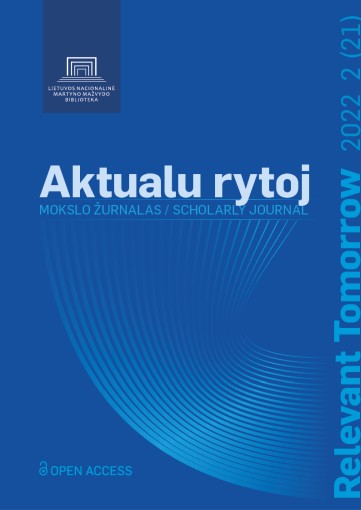Vilniaus graffiti nuo vėlyvojo sovietmečio iki 2022 metų: raidos etapai ir socialinis piešėjų bendruomenės profilis
DOI:
https://doi.org/10.51740/RT.2.21.2Reikšminiai žodžiai:
graffiti, miesto erdvė, Vilnius, erdvės sociologija, subkultūra, vėlyvasis sovietmetis, Lietuvos nepriklausomybės laikotarpis (po 1990 metų)Santrauka
Siekiant plėsti žinių apie mažiau ištyrinėtas periferines graffiti bendruomenes apimtį ir gylį, straipsnyje pristatomas išsamus Vilniaus graffiti atvejo nuo vėlyvojo sovietmečio iki 2022 m. tyrimas. Straipsnyje atsižvelgiama į Vilniaus graffiti istorinės raidos ir socialinės struktūros aspektus, taip pat į graffiti kaip nelegalios vizualinės raiškos formos, turinio bei santykio su miesto erdve aspektus Vilniuje, jų chronologinę raidą nuo vėlyvojo sovietmečio iki 2022 metų. Remiantis plačia mokslinės literatūros apie graffiti bendruomenes apžvalga ir 2007–2022 m. vykdytu kokybiniu tyrimu, paremtu pusiau struktūruotų giluminių interviu bei kitų šaltinių analize, išskiriami keturi chronologiniai Vilniaus graffiti subkultūros raidos laikotarpiai. Jie yra: ankstyvasis (iki 1990 m.), inkubacinis (1990–2000 m.), aukso amžiaus (2000–2010 m.) ir atoslūgio (po 2010 m.) etapai. Tyrimas taip pat parodė, kad socialinei Vilniaus graffiti piešėjų bendruomenės struktūrai būdingas didelis socialinis ir etninis heterogeniškumas ir gana didelis homogeniškumas lyties atžvilgiu (dominuoja vyrai). Iš paauglių ir jaunimo subkultūrinės grupės graffiti ilgainiui tampa vis įvairesnė pagal amžiaus grupes. Stebima bendruomenės senėjimo tendencija.
Downloads
Atsisiuntimai
Publikuota
Kaip cituoti
Numeris
Skyrius
Licencija

Šis kūrinys yra platinamas pagal Kūrybinių bendrijų Priskyrimas 4.0 tarptautinę licenciją.









